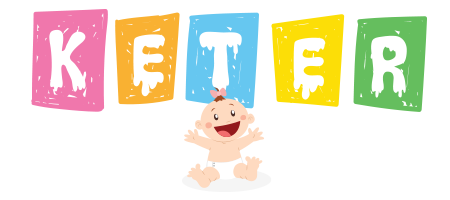
You cannot watch over your baby 24 hours a day. There are times, such as when he’s sleeping, that he will not be under your watchful eye. Learn how to create a safe sleeping environment for your baby.
General recommendations for BOTH crib and adult bed
- Make sure the crib/bed is positioned away from power points, heaters, electrical appliances, lights and windows.
- Keep the crib/bed away from curtain cords or other cords or ropes in which your baby could get entangled.
- Make sure there is nothing on the wall above the crib/bed that could fall on your child.
- Use a firm well fitted mattress. There should be no gaps between the mattress and the frame of the crib, or gaps between the mattress of the bed and bedrails or wall.
- Avoid the use of soft bedding such as quilts, sheepskins, pillows or fluffy bed clothing.
- The crib/bed should have no stuffed toys or pillows around your baby.
- If your baby is under 12 months of age, place him on his back to sleep.
- Keep your baby's head uncovered to avoid overheating. Do not cover your baby's head with hats, hoods or rugs when sleeping.
- Avoid overheating the room.
- If you swaddle your baby use only a light wrap to avoid overheating.
- Do not allow your baby to sleep in clothing with any long drawstrings, ribbons or cords. If you use a ribbon to attach your baby's pacifier make sure it is no longer than 6 inches.
Bed sharing safety
Unlike a crib, an adult bed is not designed to meet the safety needs of an infant, so special care should be taken to prepare the bed for sleeping together.
Make sure the forehead and footrests are not wide enough to fit into your baby's skull, i. rods no larger than 2 3/8 inches (about 6 centimeters).
Babies should sleep on a solid surface. Folded mattresses and waterbeds can be dangerous.
Do not allow the child to roll out of bed by using the railing or by sliding the mattress towards the wall. Care must be taken to ensure that the child does not get caught between the mattress and the wall or the mattress and the railing.
Avoid railings with slats.
Never sleep with your child if you are under the influence of drugs, alcohol, or other substances that can lower your consciousness.
Adults sharing a bed must not smoke.
Babies under 12 months of age should not sleep with older siblings.
Extremely obese parents should consider using a sidecar (coat attached to the side of the bed) as a toddler in bed.
Do not wear underwear with strings longer than 8 inches and avoid hanging jewelry. Your child may be trapped in these traps.
Place your baby close to the mother rather than between the mother and father. Some fathers do not have the same sensitivity and awareness as the mother.
Be careful not to put the baby on too much. Other hot bodies are an additional source of heat.
If necessary, you may need to purchase a larger bed. Too small or crowded a sleeping space is not safe for a small child.
If your hair is very long (at the waist or approaching length), you should pull it back and tie it. Your hair may wrap around your baby's neck, creating a risk of strangulation.
Don't let your child sleep alone in an adult bed.
Do not sleep with your baby on soft surfaces such as bean bags, waterbeds or sofas, where he may slip between joints or have wedges on the back of the sofa.
For parents who don't like sleeping besides their baby but are afraid to share a cot, try using sidecars. These are crib-like cribs that are securely fixed next to the adult bed.
Crib safety
Make sure your child's blanket meets the relevant consumer safety standards in your country. Cradles made before 1982 can be dangerous and should not be used for infants. Make sure the paint is lead free and does not crack. Look for missing or loose slats or loose cradle bolts.
Keep cell phones out of the reach of your child.
Avoid using bumpers.
Consider using a “sleeping bag” (specially designed children’s sleeping bags) instead of blankets.
If you use bedding, adjust it so that the baby's feet touch the bottom of the cradle and only cover the baby's chest. This way, she cannot curl up under the blanket and her face is covered.
Avoid overheating with excessive bedding. Choose layers similar to the ones you would feel comfortable in.
Make sure you always pull out the sides of the holder.
Do not use heating pads or baby electric blankets.
What Parents Can Do!
While no sleeping device can provide you with a 100% safety guarantee for your baby, there are many things you can do to create the safest sleep possible. Many safety tips are important regardless of where your baby sleeps, while others are specific to cribs or sleeping together.
